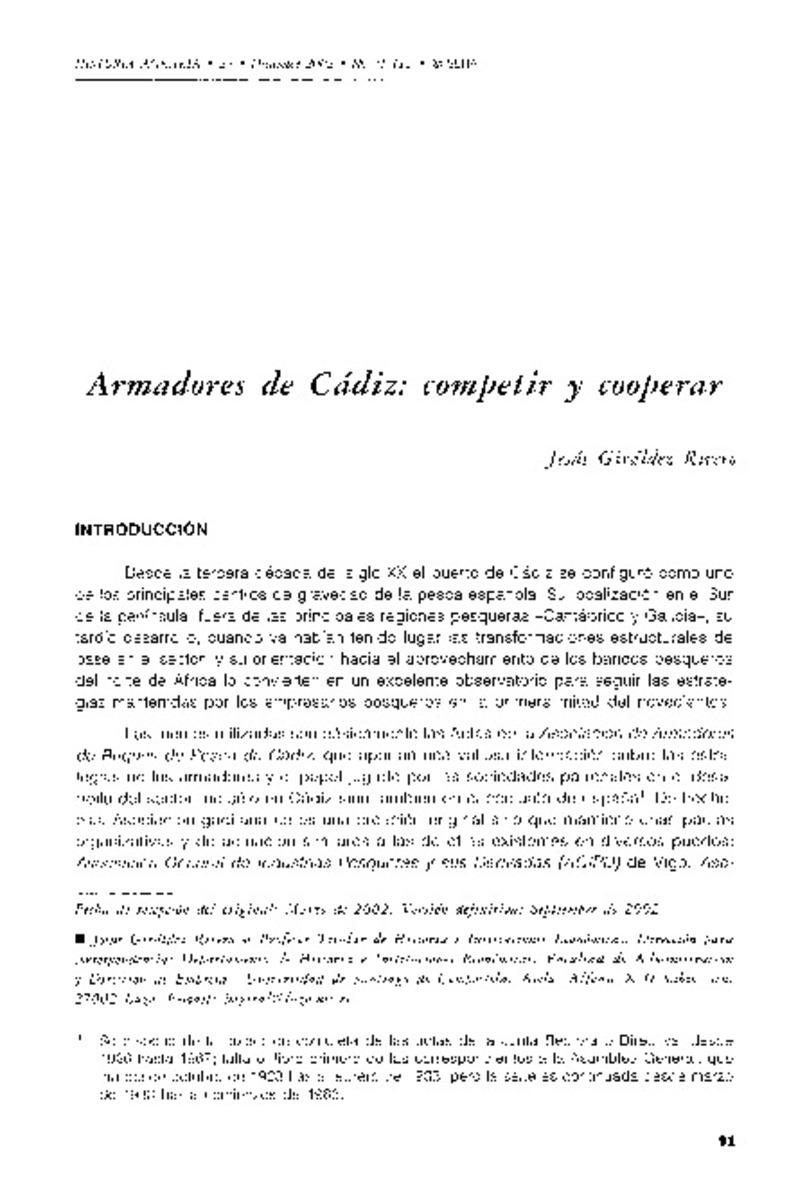Mostrar el registro sencillo del ítem
Armadores de Cádiz: competir y cooperar
| dc.contributor.author | Giráldez Rivero, Jesús | |
| dc.date.accessioned | 2015-09-16T12:45:17Z | |
| dc.date.available | 2015-09-16T12:45:17Z | |
| dc.date.issued | 2002-12 | |
| dc.identifier.issn | 1139-1472 | |
| dc.identifier.uri | http://hdl.handle.net/10234/132570 | |
| dc.description.abstract | After the 1920s , when the exhaustion of the fishing grounds in the north forced the deep-sea fleet to search for better fishing grounds off the coast of Africa, Cadiz became one of the most important fishing ports in Spain. Its consolidation stems not only from its location near the fishing grounds and consumer markets, but also from the strategies displayed by the shipowners to ensure a series of services which allowed them to compete with the northern ports. The "Asociación de Armadores de buques de pesca" – on whose documentation this paper is based - played an important part in this process. This shipowners' organisation would bring together and organise a network of family business and would become the most suitable frame to implement the owners’ strategies: introduction of key inputs, reduction of the costs of the transactions, developing complementary activities, etc. | ca_CA |
| dc.format.extent | 22 p. | ca_CA |
| dc.format.mimetype | application/pdf | ca_CA |
| dc.language.iso | spa | ca_CA |
| dc.publisher | Sociedad Española de Historia Agraria (SEHA) | ca_CA |
| dc.relation.isPartOf | Historia agraria: Revista de agricultura e historia rural, nº 28, p. 91-112 | ca_CA |
| dc.rights | © SEHA | ca_CA |
| dc.rights.uri | http://rightsstatements.org/vocab/InC/1.0/ | * |
| dc.subject | sector pesquero tradicional | ca_CA |
| dc.subject | puerto | ca_CA |
| dc.subject | estrategias de negocio | ca_CA |
| dc.subject | fishing sector | ca_CA |
| dc.subject | ports | ca_CA |
| dc.subject | business strategies | ca_CA |
| dc.title | Armadores de Cádiz: competir y cooperar | ca_CA |
| dc.type | info:eu-repo/semantics/article | ca_CA |
| dc.rights.accessRights | info:eu-repo/semantics/openAccess | ca_CA |







